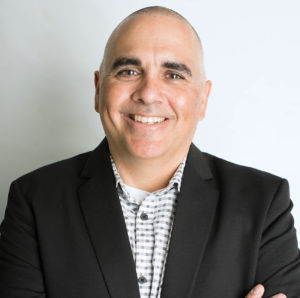This is the last in a series of episodes of Pep Talks for Side Hustlers where I’m going to take you behind the scenes of my strategic planning process – so be sure that you’re subscribed so that you don’t miss a step – and tomorrow I’m going to share with you a bonus episode of my favorite planning and strategy resources to help you grow your side hustle strategically.
From setting big goals to getting into the weeds with data to planning out what I’m doing next and and when it’s going to happen, I’m going to break it all down for you, and share the insights I’ve uncovered along the way.
In episode 155, I shared with you some key metrics that you’ll need to pull together so that you can figure out where to focus your time and money in the upcoming year, and a formula for figuring out what to focus on based on the numbers.
In episode 156, we talked about how to survey our current email list to find out who is buying from us, who isn’t and what to do about it.
Then in episode 157, I shared with how to figure out if what you’re spending your time and money on is actually worth your efforts.
In episode 158, we talked about a method of goal setting that I learned that led me to where I am right now and I walked you through how to do it in your side hustle.
In episode 159 I shared with you how to take those goals and turn them into a plan.
So if you’re not subscribed to the podcast, go ahead and do that now so that you don’t miss another episode.
Today we’re going to talk about how you’re going to bring that plan to life, and to do that, you need resources. You’ve already planned the resource of time, and today, we’re going to plan the resource of Money.
And we’re going to talk about the B-word. No, not that B-word, although you might want to say that about me after I tell you…
It’s BUDGET.
You need a plan for your money. And your plan for your money should be in alignment with your goals, and the plan for goals that you created yesterday.
So here’s how I recommend you walk through this process.
Step 1) Track your current business expenses. Write every single one of them down. What’s the service, how much is it, and do you pay it monthly or annual. Go through your PayPal transactions, your credit card transactions and just make that list.
Step 2) What are you paying for that you don’t even use that you can cancel? Cancel it. What are you paying for that isn’t in alignment with the goals you just created? Cancel it.
Step 3) Track your current income. How much money do you bring in on average every month? How much of that are you paying yourself? How much of that are you setting aside for taxes? Does what’s left cover expenses? Will it after you make the cuts I told you to make? If no, go back and make some more cuts to those things that are on the bubble. This is where it gets hard, but you’ll be glad you did it in the end.
I’m going to stop right here and say that I don’t do debt in my personal life other than my mortgage or in my business. I’m Dave Ramsey all the way. So my advice is coming from that place. If you’re cool with debt and you’re comfortable with it and you’ve got that situation all under control and you’re not stressed out about it, hey, we don’t all have to be the same and no one way is better than the other.
Also, it may seem like I’m coming from a place of scarcity, but I’m not. I’m coming from a place of Strategy so that we can move toward abundance. Because there is always more where that came from, but that doesn’t mean that we waste what we have.
Okay, onto step 4.
Step 4) Look at your goals. What do you need to buy that you don’t have now to reach your goals? Do you have the money to pay for it? Is there something you’d rather cut to get it? Can you wait until you can increase your revenue to cover it? Or if you stretch yourself to make it happen, will all the other things fall into place behind it and it will get you there faster? My mentor Chalene Johnson always says – scared money don’t make money! Which means we make investments from a place of knowledge, not scarcity or fear, right?? There’s no one answer here, these are just all the questions I want you to ask yourself as you’re making a plan for how to spend your money next year.
The final step is to pull together everything that you didn’t cut, add in the new things that you want to buy and figure out on average, what’s that going to cost you every single month, and then just making sure you’re good with that number. That’s a personal decision. I can’t tell you what’s right for you, I can only tell you what’s right for me, and that’s to make a profit and pay myself a paycheck every single month.
So there you have it. You have put together a complete plan for your business that’s based on data from your website and your actual customers, in alignment with your WHY and how you want to be spending your time, you’ve set goals and created a plan to accomplish them, and you’ve funded those goals with a budget.
And to wrap up this series, tomorrow I’m going to share with you my favorite resources on all of these topics so that you dive even deeper into strategic planning for your side hustle.
Today’s pep talk is brought to you by Bluehost. Go to www.shannonmattern.com/bluehost and get 36 months of web hosting for just $2.95 a month. That’s less than one trip to Starbucks a month – and if you’re anything like me, you’re at Starbucks more than that!
Then you can sign up for my Free 5 Day Website Challenge at www.shannonmattern.com/5day and I’ll show you step by step how to get started building your new website for your side hustle.






